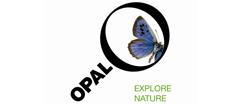Year 6: All Living Things
This list consists of lesson plans, activities and video clips to support the teaching of all living things in Year Six. It contains tips on using the resources, suggestions for further use and background subject knowledge. Possible misconceptions are highlighted so that teachers may plan lessons to facilitate correct conceptual understanding. Designed to support the new curriculum programme of study it aims to cover many of the requirements for knowledge and understanding and working scientifically. The statutory requirements are that children are taught to:
• describe how living things are classified into broad groups according to common observable characteristics and based on similarities and differences, including micro-organisms, plants and animals
• give reasons for classifying plants and animals based on specific characteristics.
Visit the primary science webpage to access all lists.
Linnean Learning
The Classification pack contains a wealth of activities and games which develop children's understanding of how living things are classified based on specific characteristics. The 'Sort and Share' activity on page 15 leads well into a discussion about how scientists categorise and identify plants and animals. They may then go on to 'Classify their classmates' and 'Crazy creatures in the activities which follow.
The Famous Scientists Facts Sheets provide mini-biographies and posters of the scientists: Carl Linnaeus, Charles Darwin, Alfred Russel Wallace and Joseph D Hooker.
BBC Bitesize Classification
Find out about how we classify animals using these guides and class clips.
Classification
Classification is the process by which living things are organised into groups according to their features. This presentation featuring photographs of many vertebrate species looks at the Linnaean classification system. It includes a game 'Guess Zoo' which helps children think about the characteristics of animals and how they are classified. Children could use cards of different animal species and try grouping them in different ways so they develop a sense that vertebrates are classified into groups according to similar characteristics. This would be a good way of leading children into creating their own classification keys using a set number of animals.
Grouping and Classification *suitable for home teaching*
This resource contains for a range of materials including, sorting cards, sheets on how to dissect plants such as buttercups and ideas for making identification keys.
Page 39 looks at how to construct keys using a step by step approach as often this can be a confusing exercise for children. Creating a ‘fact file’ is a good way of looking at the features of specimens, collating the information from different groups of children who will have been making their own fact files in a ‘character table’. Children may then use the character table to separate the specimens into groups to create a simple key. Sorting them firstly into 2 groups then taking each of the two groups in turn to sort the specimens into smaller groups and finally to into individuals.
When separating specimens into groups, there is no need for these groups to be equal in size, in fact some may only have one specimen in it. Background information on Karl Linnaeus is included in the presentation from slide 26.
Air Survey - What Can Lichens Tell Us about Air Quality?
Trees can be divided into two main types – those with flat and wide leaves (broad-leaved) and those with needle-like leaves. This activity looks at the shape of broad leaved trees and how this observable characteristic helps to identify a tree.
The tree identification booklet show how to identify a tree by looking at its leaves and twigs. After using the guide to identify different trees children could create their own keys to identify different trees from their leaves. Differentiate this activity by altering the number of leaves to identify.
The resource also gives children a context for classification by discussing how the presence of certain plants or animals within an ecosystem may be a useful indicator of the quality of the air or water. They could then carry out a survey looking at lichens on trees or fungus on sycamore leaves.
Bugs Count - What Bugs Are Living Near You?
Invertebrates are an extremely large and diverse group of animals. They may be classified into areas which include arthropods, (which have jointed limbs), molluscs and worms. Arthropods include insects, spiders and crustaceans.
Classifying them may be problematic as differences between some of these animals may be quite subtle and a lot of them will not have been seen by children. This resource usefully colour codes the identification sheets depending on the number of legs of the invertebrate. They also contain top tips for identifying them and colourful pictures to aid identification.
It is worth noting that children are often unsure where to place insect larvae as they may look very different to the adult insect e.g caterpillars. To help with the confusion this guide usefully includes larvae so children can identify these as well.
Minibeast Discovery Pack
The classification card provides a useful overview of the classification system of the animal group invertebrates or minibeasts. It is a good reference point for teachers which could also be used with children. Children often call many invertebrates insects or bugs when they may actually not belong to the insect group. One example is a spider, which although aan arthropod is actually an arachnid.
These classification card contains a 'Bug Dial' template which may be when searching for minibeasts in different habitats around school or when on a field trip. In listing the characteristics common to each phylum or class it aids the process of classification.
Living things and their habitats: classification
This resource provides a selection of lesson plans, worksheets and teachers notes relating to living things and their habitats at Year Six. They include activities which look at the history of classification of living things, studying the binomial system introduced by Linnaeus and the 7 levels of classification used today.
Ideas are also provided for activities in which children collect plants in local environment and identify them using classification keys. They then create their own classification keys to identify birds, insects and tree leaves.
Fera resources: classification
This resource supports learning about how living things can be classified into groups scientifically. Activities are based around tasks carried out in the ‘real world’ by scientists working for organisations such as Fera.:
- Play a classification game and learn about how we classify animals.
- Find out about the importance of close observation and classification in the work of a scientist who identifies pests in food products.
- Identify invertebrates in a local habitat
- Create a set of Top Trumps cards for mini-beast found in the local area.
Year 6 - Starters for Science* Suitable for Home Learning*
Starters for science provides the key learning, key vocabulary and 4 easy to run activities for each topic in Y6. These sheets may be sent home, so children can carry on learning science whilst self-isolating, or they can be used in class. There are further sheets for other year groups here.
Cough Syrup
Use this fun practical activity to learn about the importance of microorganisms, whilst applying science skills to measure viscosity.
Medicines from Microbes
Range of activities linked to microorganisms, relevant to Year 6 curriculum.
Dinosaurs
In this resource pupils will learn about dinosaurs, their various characteristics, and how they are both similar to, and different from, reptiles we see today. They will discover there are three main different types of dinosaur – the sauropods, ornithischians and the theropods and that modern birds evolved from a group of theropods that included T-rex and Velociraptor.









